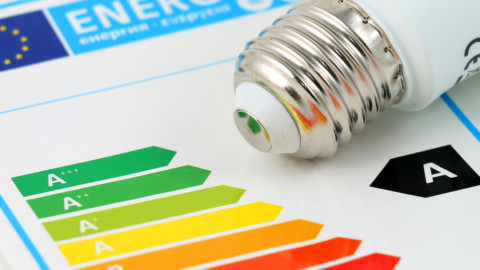CSIRO has completed fascinating new research which provides a range of insights from behavioural economics which can help utilities understand and predict likely customer responses to changes in electricity tariff designs.
The future of electricity tariffs is a huge topic with equally huge social and societal implications. CSIRO’s aim with the study was to provide utilities with a sophisticated perspective from which to think about new tariff design, and also highlight further questions that require deeper exploration.
The research, undertaken by a team led by CSIRO’s Dr Karen Stenner, is unique in that it employed a behavioural economics lens to investigate how human beings might make decisions about new tariff designs.

THE RESEARCH
The Future Electricity Tariffs Experiment was conducted in December 2014, with 1,192 nationwide respondents. The respondents were asked a series of questions to gain insight into thoughts on five different electricity tariff types: time of use; critical peak pricing; peak time rebate; real-time pricing; and capacity pricing. These were tested against the traditional flat rate tariff to discover which option was most likely to be accepted by electricity customers.
Time of use
A flat price for each kilowatt hour of electricity used. The customer will also receive a rebate on each occasion that they use less electricity than normal, during about 15 ‘extreme temperature’ days each year.
Critical peak pricing
A particular price for each kilowatt hour of electricity that is used. This price would depend on when electricity was used. The customer would pay a much higher price for electricity use during a few hours, on up to 15 ‘extreme temperature’ days each year. A lower price would then apply for the electricity used at all other times of the year.
Peak time rebate
A particular price for each kilowatt hour of electricity that is used. This price would depend on when electricity was used. A higher price would be in place for electricity used between 4pm and 8pm on weekdays. A lower price for electricity use overnight between 10pm and 7am, and a moderate price for electricity use at any other time.
Real-time pricing
A particular price for each kilowatt hour of electricity that is used, where the price would vary hour-by-hour. The price would be higher during the hours when consumer demand is high and lower when consumer demand is low.
Capacity pricing
One charge is paid by the customer for the whole billing period that would be determined by the largest amount of electricity used at any one moment during that month. The charge would depend upon which band the customer had managed to keep their electricity within at all times that month. The three bands are, low band with the lowest charge, medium band with a moderate charge and high band for the highest charge. If at one time multiple appliances were running and a band was exceeded, the customer’s bill would reflect this for the entire month.
FINDINGS
Overall, all forms of cost-reflective pricing were found to be significantly less attractive to customers than traditional flat rate tariffs, which is not surprising, given that flat rate tariffs adhere to the key psychological factors influencing customer choice.
Consumers ‘ranked’ the tariffs fairly predictably: from the simplest, most familiar and apparently lowest-risk schemes (flat rate tariffs) down to the most complex, novel and apparently highest-risk structures (real-time tariffs and, least favoured of all, capacity pricing).
Of the cost-reflective pricing options, time of use tariffs, critical peak pricing and (especially) peak time rebates are perceived significantly more favourably.
This is probably because peak time rebates offer potential for gains rather than losses, the latter being something to which human decision-makers are disproportionately averse (i.e. people generally work harder to avoid a loss than to secure an equal-sized gain). Essentially, with these tariffs the consumer stands only to gain (in the form of rebates for reduced consumption in the peak), and never to lose (via higher charges for peak consumption). They also offer, for most of the year, the certainty that comes with what is, essentially, a flat rate tariff.
Overall, we understand these relative tariff preferences as roughly reflecting public perceptions both of how difficult a proposed pricing structure is to comprehend, and how hard it might be for households to behave in ways that would maximise its benefits.
The capacity pricing tariff was the least attractive option for electricity customers. Initial loss becomes apparent in the fact that an ‘accidental’ overuse of power at one point in time could result in a high electricity price for the month, despite this being an outlier to a customer’s average energy consumption. This leads to the tariff being viewed as particularly risky. This tariff design is also rather unfamiliar, it does not reflect community interests and is the most complex and difficult to understand.
THE CONSUMER CHALLENGE
The greatest barrier to uptake of cost-reflective pricing appears to be consumer’s aversion to making any kind of choice, and giving up the status quo. Taking into consideration those who will never even respond to such a tariff offer, CSIRO estimates that the initial voluntary adoption of cost-reflective pricing is unlikely to exceed 5-10 per cent of households.
On the face of it, this seems to present policymakers, regulators, networks and retailers with two alternative courses of action:
- Allow the enthusiastic 5-10 per cent to voluntarily ‘opt-in’ and willingly sustain 100 per cent effort to modify their energy use behaviours; or,
- Use mandates or ‘opt-out’ schemes to essentially impose cost-reflective pricing on 100 per cent of consumers – although only approximately 5-10 per cent will significantly modify their energy use patterns (especially where no enabling technologies are provided).
Without enabling devices, other studies have demonstrated many consumers find it hard to continuously and significantly modify their energy use behaviour, especially at times correlated to extreme network peak demand.
If dependent primarily on manual responses, CSIRO expects that even the most compelling consumer engagement campaigns and pricing offers may result in many households being unable to fully reap the desired benefits.
CONCLUSIONS
Considering their own findings in conjunction with prior research on usage and key principles from psychology and behavioural economics, CSIRO believes that cost-reflective pricing will be more successful the less it relies on consumers themselves, responding to changing price signals.
Analysis indicates that money-back guarantees might significantly boost acceptance of cost-reflective pricing plans. However, in terms of effective usage (vs. initial uptake), prior research suggests that providing automated demand management devices is likely to prove particularly consequential in terms of:
- Simplifying household demand response at peak times
- More easily and consistently achieving desired household bill reductions
- Reliably mitigating network peak demand spikes
- Delivering overall improvements to network efficiencies and utilisation rates.
It is predicted that the beneficial impacts of pricing and enabling device bundles may be further increased by:
- Providing simple, low cognitive-effort, high visual-impact reminder devices, such as ‘energy orbs’ that glow different colours (e.g. red, yellow, green) depending on household energy consumption.
- In the longer term, pursuing additional innovations in building and technology design (e.g. building codes, solar air conditioning, electric vehicle integration with home energy systems).
RELATED CONSIDERATIONS
Given the study conclusions, it is highly relevant that Australia is a global leader in automated demand management standards. Australian Standard AS/NZS4755 has already been adopted by many global manufacturers of the three largest sources of residential peak demand: air conditioning, swimming pool filtration and electric hot water. If AS/NZS4755 compliance is mandated by the government, 100 per cent of relevant appliances sold in Australia will be ‘demand response ready’ out of the box.
Within a holistic pricing and enabling devices bundle, cost-reflective pricing primarily functions to provide a quid pro quo incentive to engage in demand-side participation. If a considerable proportion of consumers have positive experiences with cost-reflective pricing – aided by highly automated enabling technologies – and these experiences are widely shared, some forms of dynamic pricing could conceivably be ‘normed’ and normalised.
In all policy making around cost-reflective pricing it will be absolutely critical to distinguish what might promote uptake as opposed to effective usage of cost-reflective pricing.
Anything that induces the former without also facilitating the latter will carry with it considerable political, economic and social risks.
The CSIRO study takes into account some of the key factors influencing customer choice:
Loss aversion & future discounting
The consumer steers clear of initial losses, even if the future has potential to provide gains. In this way, the future is discounted.
Risk aversion
The consumer avoids risk and makes their decisions based on certainty.
Status quo bias
The consumers chooses to stick to defaults or that which is familiar.
Cognitive overload
The consumer chooses tariff designs that are clear and simple over those that are complex. As information and options increase, the consumer’s ability to make a decision decreases.
Message framing
The consumer bases their decision on community norms and interests.
By also considering the above factors, energy companies will be able gain a greater understanding of how future cost-reflective tariff pricing options may be received by their customers. This information can then be used to create cost-reflective tariff designs that adhere to particular behavioural principles. This would ultimately enable energy companies to optimise an increasingly decentralised electricity system and stabilise real cost of electricity to consumers themselves.















